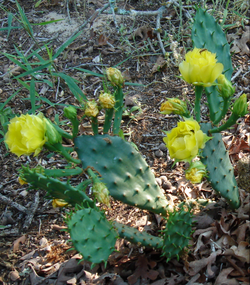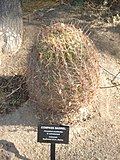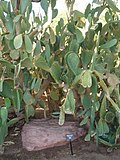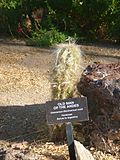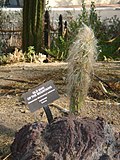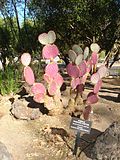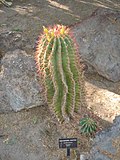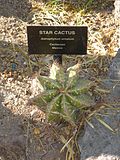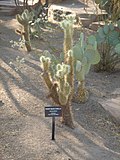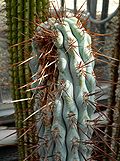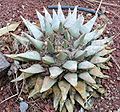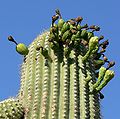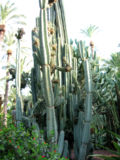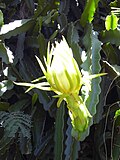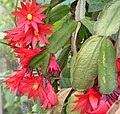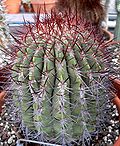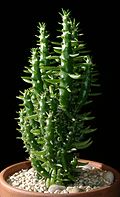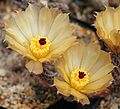AY Honors/Cacti/Answer Key/es
| Cactus | ||
|---|---|---|
| Asociación General
|
Destreza: 1 Año de introducción: 1944 |
|
Requisitos
|
La especialidad de Cactus es un componente de la Maestría Naturaleza. |
| Conexión Logros para la Investidura: Esta especialidad está relacionada con los requisitos de Logros para la Investidura para COMPAÑERO DE EXURSIONISMO Estudio de la naturaleza que requiere (como una de dos opciones) cumplir parcialmente el requisito #5 de esta especialidad. Esta especialidad es una elección popular para la especialidad de la categoría de Estudio de la naturaleza de nivel de destreza 1 requerido para los COMPAÑEROS DE EXCURSIONISMO. |
1
- Areolas - flores, ramas y espinas brotan de estas - ninguna otra planta tiene esta característica.
- Espinas - Tal vez la característica más conocida del cactus, las espinas pueden variar mucho en apariencia, forma, tamaño y color.
- Flores - las flores no son exclusivos a los cactus pero las flores de cactus son únicas. Las flores de cactus suelen ser bastante espectaculares y muy complejas.
- Leaves - Most cacti do not have leaves, however, some do. Pay special attention to the presence or absence of leaves.
- Origin - All cacti are native to the America's and surrounding islands. With one exception - Rhipsalis baccifera. Although, world wide cultivation has made this less helpful for identification.
2
- Cacti are used for:
- 1. Decorating and Landscaping - as houseplants, in dry gardens, or, even as a fence.
- 2. Edible Fruit Producing - such as Prickly Pear, Hylocereus, Dragon fruit.
- 3. Psychoactive uses - the Peyote, Lophophora williamsii, is a well-known psychoactive agent used by Native Americans in southwestern United States.
- 4. Host for bugs - the Opuntia is also used as a host for cochineal bugs for the Cochineal dye industry.
- 5. Food - Nopal cactus has been a staple food and base for beverages in Mexican culture for centuries.
- 6. Emergency water source - Some cactus can serve as an emergency water source, but be careful as you can get diarrhea causing further dehydration.
3
- Cacti can adapt very well to dry climate or rocky terrain like deserts or mountains, but they can thrive in jungles. They prefer a hot, dry climate, not a humid, hot climate as popular myth suggests. The fact that they also thrive on sandy/rock soil is because the way water doesn’t pool near or on them and the nutrients the soil is rich with.
4
Hey! This is your part. Enjoy!
I took photos of these two. Can you identify them?
Now go and identify more...
5
There are different tribes of cacti:
B. hertlingiana (Tribe Browningia)
Ariocarpus retusus (Tribe Cacteae)
Calymmanthium (Tribe Calymmantheae)
Cereus peruvianus (Tribe Cereeae)
Hylocereus undatus (Tribe Hylocereeae)
Parodia magnifica (Tribe Notocacteae)
Golden cereus (Tribe Pachycereeae)
Schlumbergera gaertneri (Tribe Rhipsalideae)
D. rhodacantha (Tribe Trichocereeae)
A. subulata (Tribe Austrocylindropuntieae)
Cuija (Tribe Opuntieae)
Pterocactus tuberosus (Tribe Pterocacteae)
Maihueniopsis subterranea (Tribe Tephrocacteae)
Referencias
- Categoría: Tiene imagen de insignia
- Adventist Youth Honors Answer Book/Honors/es
- Adventist Youth Honors Answer Book/es
- Adventist Youth Honors Answer Book/Skill Level 1/es
- Categoría: Libro de respuestas de especialidades JA/Especialidades introducidas en 1944
- Adventist Youth Honors Answer Book/General Conference/es
- Adventist Youth Honors Answer Book/Nature/es
- Adventist Youth Honors Answer Book/Nature/Primary/es
- Adventist Youth Honors Answer Book/Stage 100/es
- Adventist Youth Honors Answer Book/Naturalist Master Award/Flora/es
- Adventist Youth Honors Answer Book/IAConnection/es


